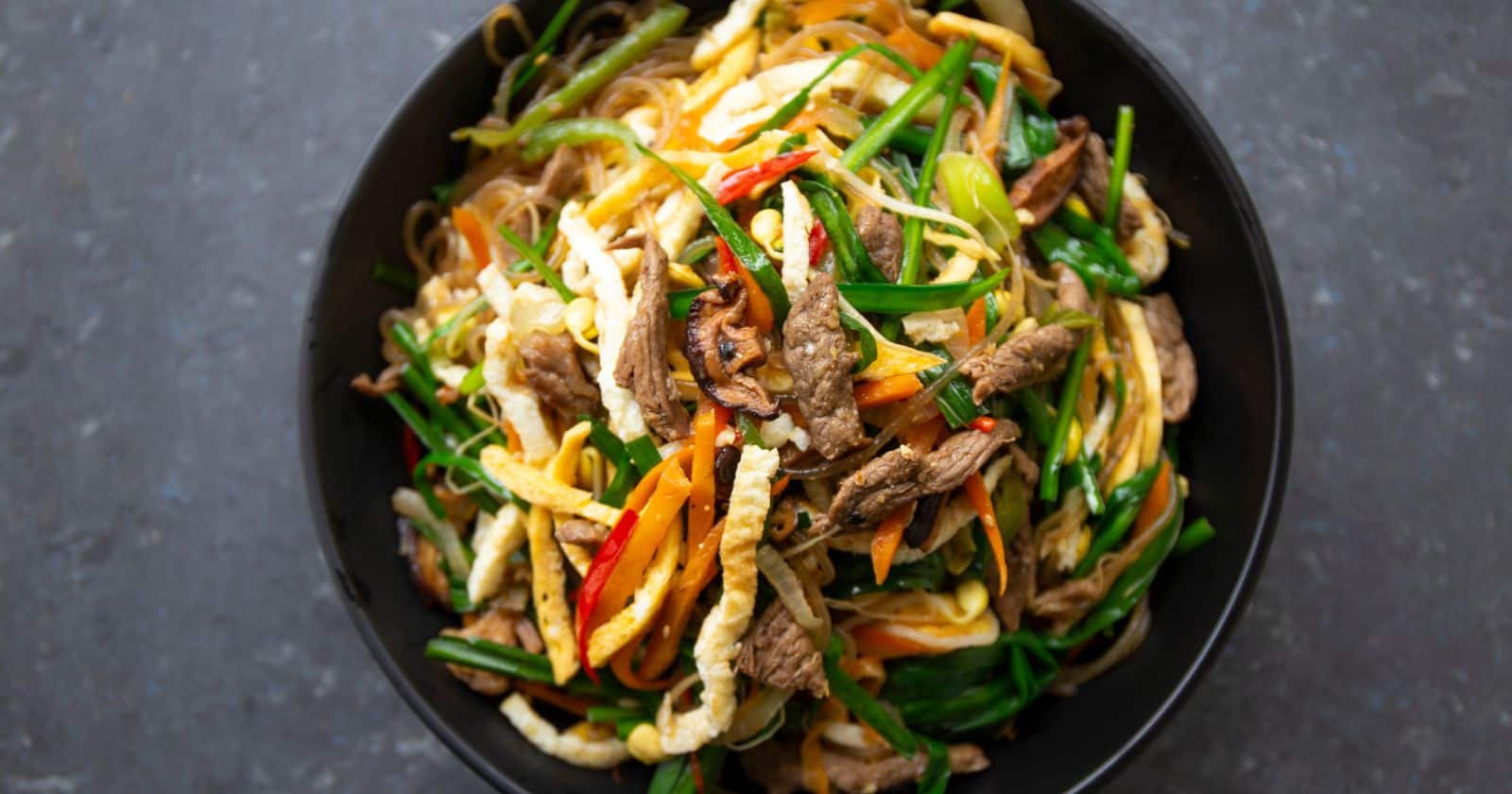Looking for vegetarian options at Korean BBQ? Good news! Korean BBQ does offer a variety of delicious vegetarian choices. From grilled vegetables to tofu dishes and vegan side dishes, there’s plenty to enjoy. However, it’s important to know which restaurants offer these options, so let’s dive in!
Yes, Korean BBQ has vegetarian options! Grilled vegetables like mushrooms, zucchini, and bell peppers can be savored. Tofu can be marinated and grilled or added to soups and stews. Enjoy vegan banchan, including kimchi and pickled vegetables. Even the popular dish bibimbap can be made vegan by omitting the meat and adding more veggies.
In this article, we’ll explore the various vegetarian options available at Korean BBQ. We’ll discuss the grilled vegetable choices and share some mouthwatering tofu dishes. Additionally, we’ll highlight the wide array of vegan banchan side dishes that perfectly complement the BBQ experience.
Join us as we delve into the vegetarian world of Korean BBQ and uncover the delightful options waiting to be explored!
Grilled Vegetable Options at Korean BBQ
Grilled vegetables are a fantastic vegetarian option at Korean BBQ, providing a delicious and healthy alternative to meat dishes. Here are some of the grilled vegetable options that you can enjoy at a Korean BBQ:
Lettuce: Lettuce is not only popular for wrapping up grilled meats, but it can also be grilled itself. Grilled lettuce adds a smoky flavor and can be served as a side dish, adding a refreshing crunch to your meal.
Onions: Sliced onions can be grilled to perfection, offering a sweet and smoky flavor that complements the other dishes on the table. Grilled onions can be enjoyed as a side dish or added to wraps for an extra burst of flavor.
Squash: Winter squash varieties like butternut or acorn squash can be grilled and served as a tasty side dish. Grilling brings out their natural sweetness and enhances their flavors, making them a great addition to a Korean BBQ spread.
Zucchini: Zucchini is a versatile vegetable that pairs well with various dipping sauces. Sliced and grilled zucchini becomes tender with a slightly charred exterior, adding a delicious texture and taste to your meal.
Mushrooms: Mushrooms are an excellent vegetarian protein option, and they can be grilled to perfection at a Korean BBQ. Grilling enhances their earthy flavors and creates a savory and smoky taste that is hard to resist.
Delicious Tofu Dishes at Korean BBQ
Korean BBQ tofu is a tasty and satisfying vegetarian option that can be enjoyed at Korean BBQ restaurants. There are several delicious tofu dishes that showcase the versatility of tofu and the bold flavors of Korean cuisine. Here are three mouthwatering options:
Korean Barbecued Tofu: A flavorful dish that involves marinating tofu in a mixture of Korean BBQ sauce, sambal oelek, and soy sauce, then grilling it to perfection. This combination of sauces adds a delicious sweet and spicy kick to the tofu, making it a popular choice among vegetarians.
Vegan Korean BBQ Tofu: For those who prefer baked tofu, this recipe involves marinating tofu in a mixture of soy sauce, brown sugar, rice vinegar, sesame oil, and ginger, then baking it in the oven until crispy. The result is a delectable dish with a delightful crunch and a rich blend of savory flavors.
Baked Korean BBQ Tofu: Another baked tofu option, this recipe calls for marinating tofu in a mixture of soy sauce, rice vinegar, garlic, ketchup, and hoisin sauce, then baking it until crispy. The tofu absorbs the flavors of the marinade, resulting in a mouthwatering dish that is both tangy and sweet.
Exploring Vegan Banchan Side Dishes
If you’re looking to enjoy a vegan meal at a Korean restaurant, there are several delicious banchan side dishes that you can try. These dishes are packed with flavor and can complement a variety of main dishes. Here are some vegan banchan side dishes that you can explore:
Korean Seasoned Bean Sprouts (Kongnamul Muchim): Blanched soybean sprouts are seasoned with soy sauce, sesame oil, garlic, and green onions. This dish is light, refreshing, and full of natural flavors.
Cucumber Kimchi: This side dish features cucumber slices marinated in a spicy and tangy sauce. It offers a perfect balance of heat and crunch and is a great accompaniment to any Korean meal.
Korean Glazed Potatoes (Gamja Jorim): Bite-sized potatoes are braised in a sweet and savory soy-based glaze. This dish is hearty, rich, and provides a unique contrast to other banchan dishes.
Korean Spinach Salad (Sigeumchi Namul): Blanched spinach is seasoned with soy sauce, sesame oil, garlic, and sesame seeds. This side dish is not only flavorful but also packed with nutrients, making it a healthy addition to your meal.
Spicy Cucumber Salad (Oi Muchim): Thinly sliced cucumbers are marinated in a spicy dressing made with gochugaru, garlic, sesame oil, and vinegar. This dish adds a zesty kick to your meal and provides a refreshing crunch.
Stir-fried Zucchini (Hobak Bokkeum): Zucchini is stir-fried with garlic, soy sauce, and sesame oil, resulting in a simple yet flavorful side dish. It’s a great way to incorporate vegetables into your meal.
Steamed Eggplants (Gaji Namul): Eggplants are steamed and seasoned with soy sauce, garlic, and sesame oil. This dish offers a tender texture and a rich umami flavor.
Seasoned Radish (Musaengchae): Julienned radish is seasoned with vinegar, sugar, and gochugaru, creating a refreshing and crunchy side dish. It provides a balance to the other flavors on your plate.
Seasoned Seaweed (Miyeok Muchim): Rehydrated seaweed is seasoned with soy sauce, sesame oil, garlic, and sesame seeds. This side dish has a unique texture and brings a taste of the sea to your meal.
Korean Braised Tofu (Dubu Jorim): Firm tofu is braised in a flavorful sauce made with soy sauce, garlic, ginger, and green onions. It offers a savory and satisfying addition to your banchan spread.
These vegan banchan side dishes are not only delicious but also offer a range of flavors and textures. They can enhance your Korean dining experience and provide a delightful accompaniment to your main dishes. Enjoy exploring these vegan options and discovering new flavors in Korean cuisine.
Making a Vegan Bibimbap: A Tasty Option
To make a vegan bibimbap, start by cooking short-grain rice according to the package instructions. Then, prepare a variety of sautéed or stir-fried vegetables such as mushrooms, carrots, spinach, bean sprouts, zucchini, and sprouts. You can cook them separately or together, based on your preference.
In a small bowl, mix gochujang (Korean chili paste), rice wine vinegar, soy sauce (or tamari for a gluten-free version), and toasted sesame oil to make the bibimbap sauce. Adjust the quantities to suit your taste. If desired, pan-fry firm tofu coated in cornstarch until crispy.
Next, assemble your bibimbap by placing a serving of cooked rice as the base in a bowl or a heated stone pot (dolsot). Arrange the sautéed vegetables and tofu on top of the rice. You can keep each ingredient separate or mix them together.
Drizzle the bibimbap sauce over the vegetables and tofu, adjusting the amount based on your
Feel free to personalize your bibimbap by adding toppings like sliced avocado, pickled radish, or sesame seeds. Bibimbap is a versatile dish that can be tailored to your taste preferences and dietary needs.





